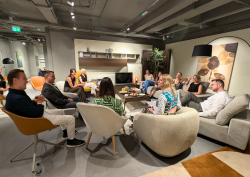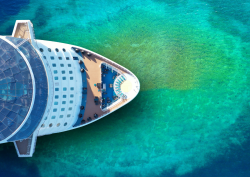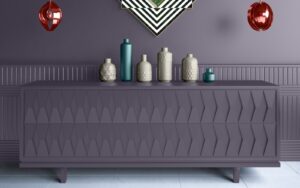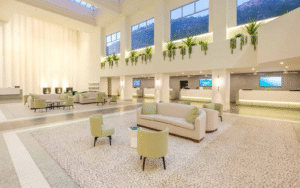The latest Hotel Designs roundtable took place in the midst of the creative energy that was London Design Festival. In association with Atlas Concorde, Editor Hamish Kilburn welcomed a group of leading designers to the table, appropriately surrounded by the Atlas Concorde range of stone, porcelain and marble, and more than a few strong espressos…
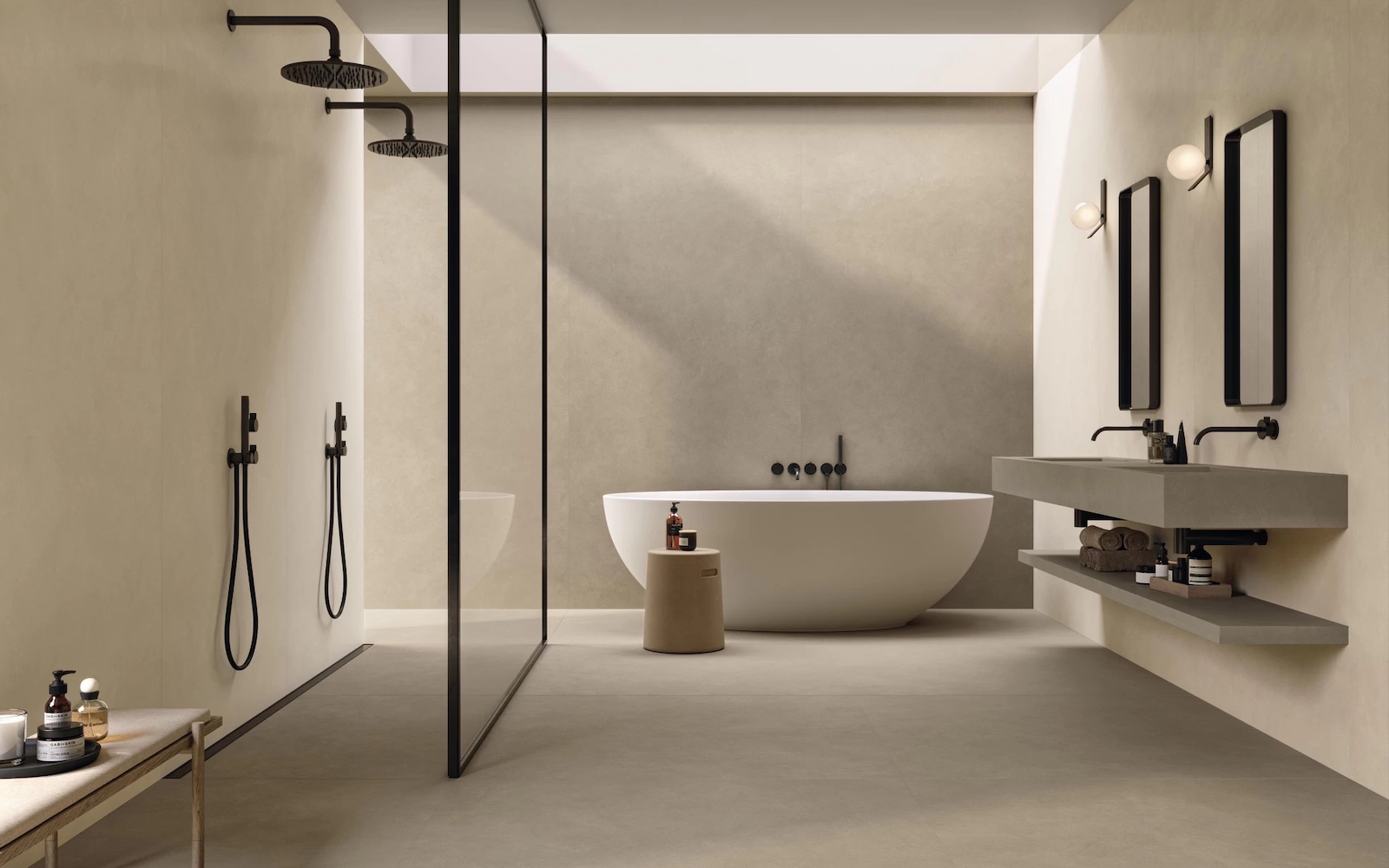
Creating a context for the conversation, the panel who attended Hotel Designs’ latest roundtable were given a glimpse into the creative process and learned about the inspiration behind Boost Natural, the latest collection launched by Atlas Concorde. Inspired by the irregular textures and dusty colours of raw earth surfaces, the collection is directly about introducing elements of nature into surface design in a contemporary way. It responds to the demand we are seeing for natural and tactile imperfections in surface design, being driven by the ever changing expectations of clients across design sectors. It also was the inspiration behind the conversation between the leading designers who were invited to discuss ‘nature vs nurture in surface design’.
On the panel:
- Mustafa Afşaroğlu, Interior Designer & Co-founder, Taner’s Sons
- Maria Cheung, Head of Interior Design, Squire and Partners
- Leanne Armstrong, Founder and Creative Director, Black Ivy Design
- Vitalija Katine, Technical Services Manager EMEA, Six Senses Hotels Resorts Spas
Kicking off the conversation, Editor Hamish Kilburn, who moderated the discussion, identified the demand being presented to designers for bringing in natural elements and surfaces, and went on to ask the panel, as designers, how are they responding to this on various levels – addressing concepts of biophilic design and concerns about sustainability at the same time.
Responding to both elements of the question Mustafa Afşaroğlu championed clay as, “a wonderful material to use, it is tactile and textured, giving an instant connection to nature and is a fairly direct way of introducing nature though a surface design.” Looking into the qualities of clay, the designers agreed it answered a lot of the requirements of both sustainability and biophilic design, while allowing for more character to be introduced through surface design – but throw the question of durability into the mix and things get a little more complicated. The response to those concerns could be to embrace the material and its inherent qualities rather than fight against them, articulated Maria Cheung, “allow the surface to wear naturally and make that part of the story – the clay can tell a story as well – the marks and wear become part of the patina.”
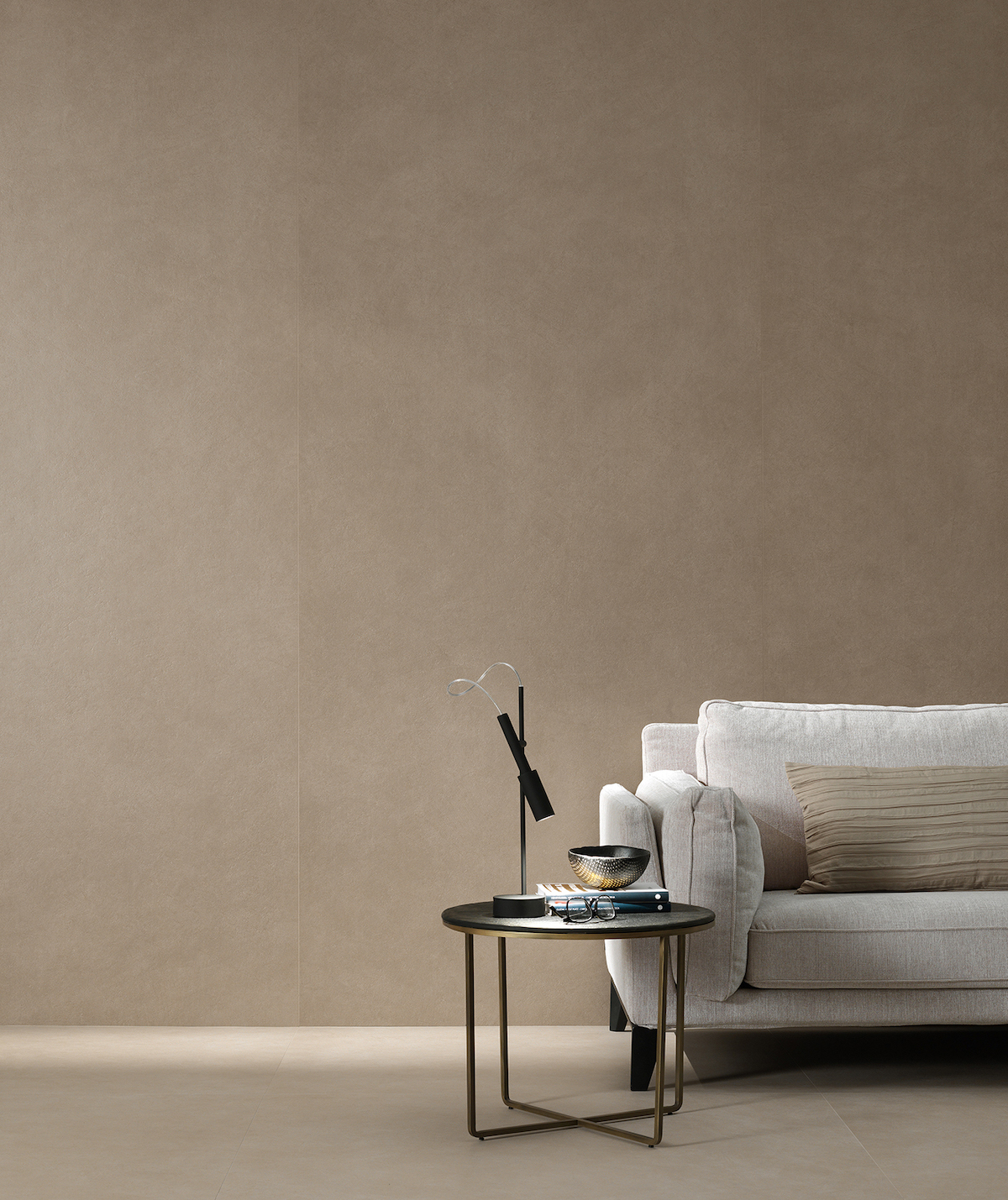
Image credit: Atlas Concorde
Digging a little deeper and continuing the conversation on clay, Vitalija Katine added, “the focus on natural materials and surfaces coincides with the fact that biophilic design has become a wider conversation. At Six Senses we have been addressing biophilic design since the ’90s – now that it is a design concept more widely talked about, clay is a perfect material, not only because of the texture, but it has been proven that the natural pink and earthy colours of clay subconsciously connects you to a more relaxed state of being, introducing biophilia in the interior in a more subtle way.”
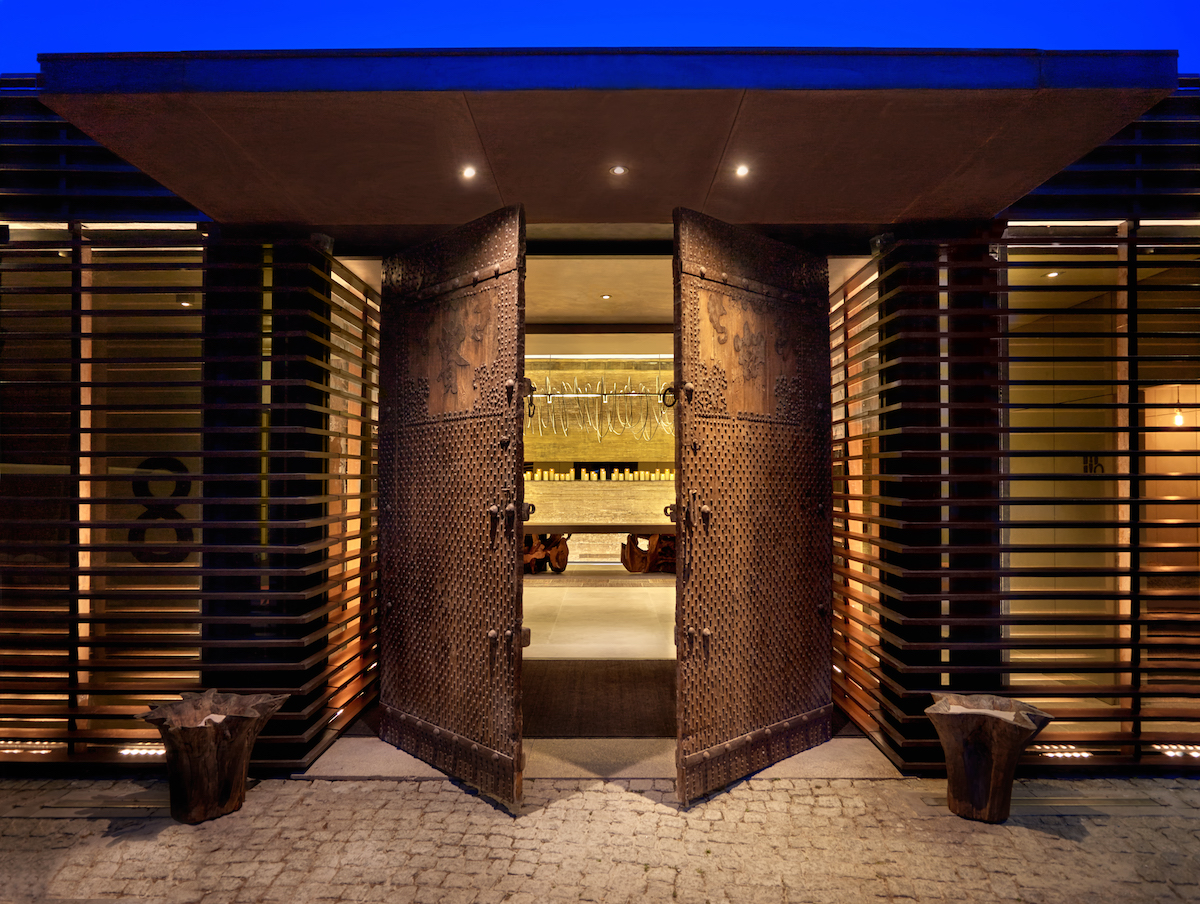
Image credit: Six Senses Hotels & Resorts
All the designers around the table agreed that there is a call for more characterful surfaces in interiors, and clay certainly answers that on several levels. Although it should be seen as part of a bigger picture. As explained by Leanne Armstrong, ” it is the collaboration of elements, rather than one single element, working together, creating an atmosphere and introducing the feeling of being outside along with a sense of nature.”
Discussion moved onto the relationship between the lighting and surface design. Looking at how architectural lighting can be used to enhance surface design, Katine commented, “lighting has always been a passion of architects and interior designers, and now with so much more science connected with it it has become much more apparent, along with the science connected to materials and surfaces.”
The topic of sustainability inevitably conjures up diverse views around what is and what isn’t sustainable, especially when questions of durability as well as the rarity of the material are included, not to mention the capability of new technology. Having discussed in depth the trend to introduce materials that are importantly both natural and sustainable, this led on to questions of material specification. Kilburn asked the question about the possibility of developing a material passport to assist in the process. This could potentially be a tool to assist designers to understand both the historical make up of a material as well as how it can be repurposed seamlessly going forward. The product information is out there it becomes a matter of how to access it.
Afşaroğlu answered:”The information out there at the moment is quite complicated and very time consuming for designers and while some bigger brands will have a department dealing with that directly to advise the designers, time is always an issue and designers need a simplified rating version which can be used as a reference.”
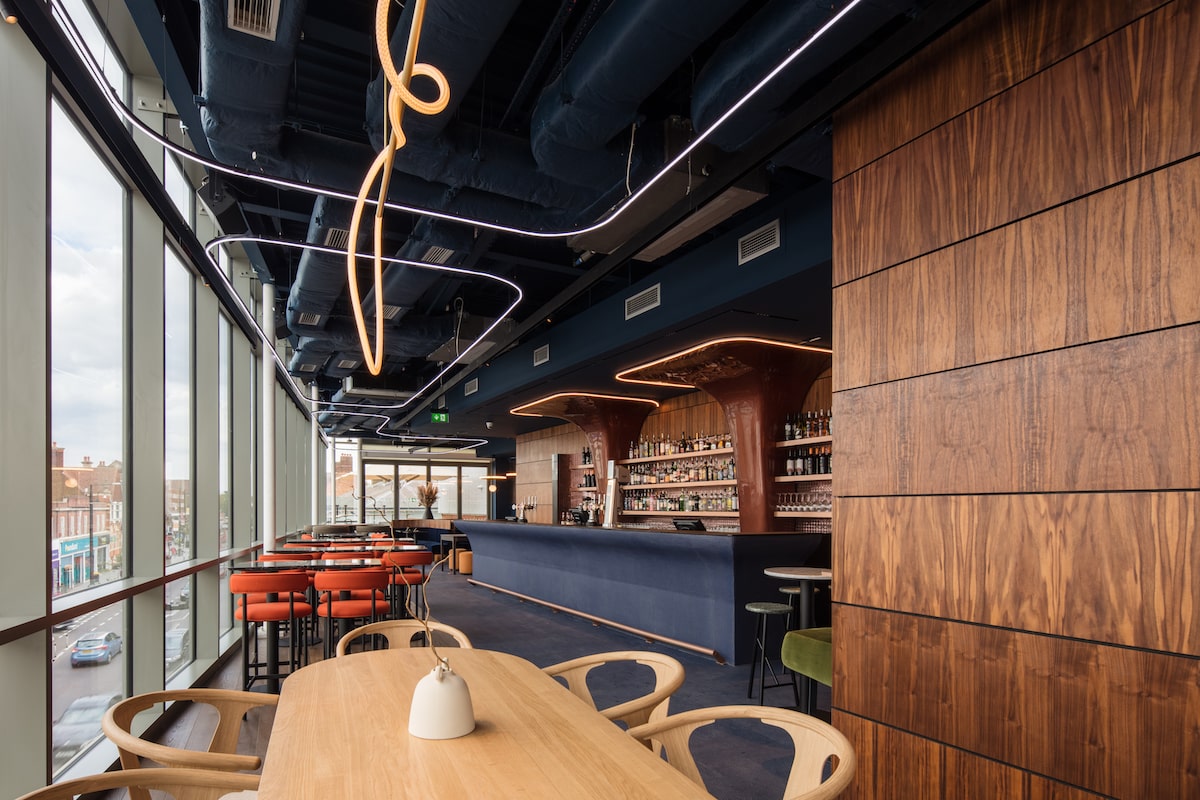
Image credit: MARK’S SKYBAR designed by Taner’s Sons
Cheung commented: “Some industries are doing it already, timber is a good example of managed production which reduces waste – and we needs an industry push to do this with resources like stone ensuring that every piece is valued and used.”
Bringing the conversation around to the hospitality sector in particular, identifying the role surface design plays in evoking a meaningful sense of luxury and wellness was a particular point of interest for Katine in relation to the Six Senses model. “Texture and surface is a way of introducing nature in urban environments where you don’t necessarily have a tree outside the window or a beach on your doorstep – injecting wellness through surfaces and the tactility behind that becomes key,” she said. “With spa design clearly based around wellness and connection with nature, yet finding in the urban environment, the city spa so often set in the basement, using tiles and surfaces with texture and pattern from nature and then importantly using lighting to enhance this, is key. This new range from Atlas Concorde with ground earth colours and vegetative references clearly feeds into this narrative.”
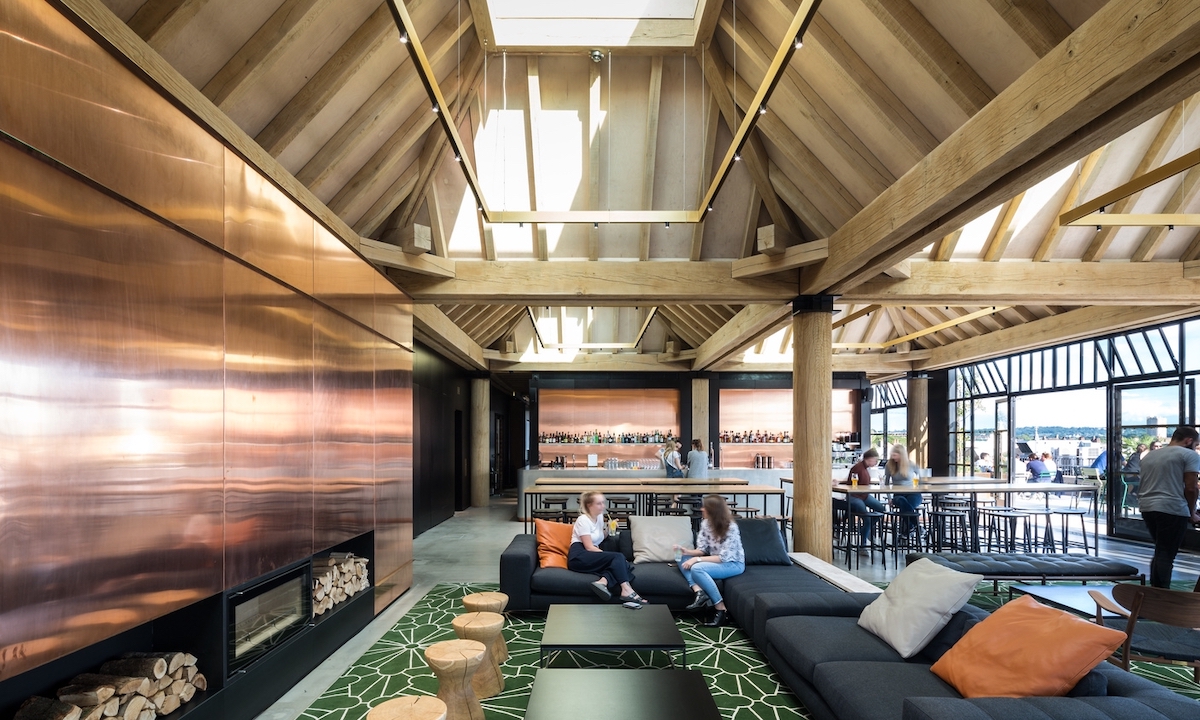
Image credit: Squire & Partners
Identifying different products that can provide a connection and a sense of place, the conversation continued seamlessly between a coffee and pastry break to identifying the importance of the role surface application can play in blurring boundaries and building up the design story. The panel discussed how products that have both imperfections and character have the ability to draw people in, and with this of course, the importance of tactility in design projects. With both qualities being part of the Boost Natural collection, designers are given choices that allow them to do exactly that; draw people in with subtle notes and references to natural elements. The surface texture, especially when seen on a large surface design connects people to nature, inviting them to touch the surface. Now more than ever design and products need to reference locality and provide depth and layer to a space. Storytelling and design narrative is key and surface design and elements are integral to this process.
Afşaroğlu explained: “Story telling is becoming increasingly important – the story behind the design, the product , the designer. It is also important for the client to be part of this process and have a story to tell about a product as this all feeds into the experience. Design has become much more than the finished product, the story behind it adds another layer to the design process.”
In conclusion, Kilburn drew the conversation together by throwing the conversation open with the question: ” Is there more demand for designers to take risks, are designers being allowed, or in fact expected to be braver and push boundaries?”
Armstrong, whose clients at Black Ivy come from a cross range of sectors agreed, stating “Absolutely, that is key – taking the risk and going with it will always pay off. clients always want something new, and part of the designers role is about selling it to the client.” Agreeing with this, Cheung added: “It is so important that clients become part of the journey and narrative – the exciting part is when the client gets completely onboard and it becomes a truly collaborative process.”
Atlas Concorde is one of our Recommended Suppliers and regularly features in our Supplier News section of the website. If you are interested in becoming one of our Recommended Suppliers, please email Katy Phillips.
Main image credit: Atlas Concorde





